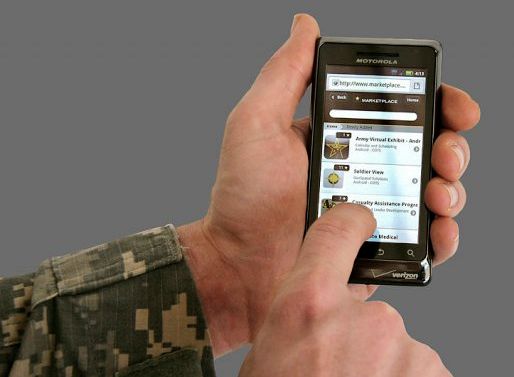Prototype Approved App Marketplace Launched By US Army

The US Army has launched a marketplace prototype for approved apps while the Air Force has bought into the iPad revolution
The US Army has launched a prototype app store known as the Army Software Marketplace that will enable Army personnel to access apps for their smartphones and tablets.
The United States Army said the newly launched Army Software Marketplace prototype offers 12 mobile training applications for soldiers to use on personal phones or tablets. The apps were developed by Army training schools in the Connecting Soldiers to Digital Apps, or CSDA, initiative, the Army said.
Official safeguards
When fully implemented, the marketplace will deliver official Web-based and downloadable applications and links to approved commercial software for all devices approved for use within the Army’s Common Operating Environment on the Army network, according to the Army.
 Army officials said the marketplace prototype currently supports apps that run on iOS-based devices and will soon support apps on Android devices. Among the apps available now are: The Soldiers Blue Book (initial entry training guide), Army Values, Army Social Media Handbook and Developing a Performance Work Statement, according to the website.
Army officials said the marketplace prototype currently supports apps that run on iOS-based devices and will soon support apps on Android devices. Among the apps available now are: The Soldiers Blue Book (initial entry training guide), Army Values, Army Social Media Handbook and Developing a Performance Work Statement, according to the website.
“The Apps Marketplace is at the centre of Army efforts to radically reduce the time to deliver applications across the force,” Lieutenant General Susan Lawrence, the chief information officer/G-6, told www.army.mil. “This prototype is a first step in establishing and exercising new submission and approval processes that will eventually enable Army members, organisations and third-party developers to release applications for Army-wide distribution.”
Army officials also said the new marketplace prototype brings together key Army stakeholders to focus on implementing agile software-development practices such as increasing collaboration early on between end-users and developers, and delivering software to users in short release cycles, according to the Army’s site.
Meanwhile, not to be left behind in enabling its staff with the latest and greatest of gadgets and technology, the US Air Force earlier this month made an initial order of 63 iPad 2 tablets, which represented the first batch in what could be as many as 18,000 Apple tablets ordered off of a contract potentially worth $9.36 million (£5.9m).
The US Air Force’s Air Mobility Command signed a $9.36 million contract to buy as many as 18,000 iPad 2s for use by pilots, navigators and trainers. The competitive bid went to Executive Technology. The Air Force will pay the firm $520 (£328) per iPad2, which is $79 (£50) less than the $599 (£378) list price for the devices.
In an article about the bid, Captain Kathleen Ferrero of the Air Force’s Air Mobility Command Public Affairs wrote: “Improved safety, operational effectiveness and efficiency are just a few reasons Air Mobility Command officials are looking into using tablet devices such as electronic flight bags for aircrew members reference materials in the cockpit during in-flight emergencies.”
Major General Rick Martin, the AMC director of operations, said: “Moving from a paper-based to an electronically-based flight publication system will not only enhance operational effectiveness, it can also save the Department of Defense time and money.”
The iPads will replace traditional paper-based flight bags, which consist of bulky manuals and navigation charts.
Crisis app
In another move tapping into the convenience of smartphones, US Air Force software developers have created a mobile Web application that enables the service’s personnel to account for themselves and family members from their smartphone during a crisis or natural disaster.
An article on www.af.mil, the official website of the US Air Force, explains that during a crisis, the Air Force uses the Air Force Personnel Accountability and Assessment System to account for and assess the needs of the Air Force’s Total Force – active-duty Airmen, selected Reserve members, Department of the Air Force and non-appropriated fund civilian employees, Air Force contractors (assigned overseas) and family members.
The article further noted that AFPAAS becomes operational, or active, at leadership request during crises to allow the total force to account for themselves and their family’s safety and whereabouts. Now individuals have improved access through certain smartphones to the accountability and assessment features of AFPAAS.
“The Air Force is taking AFPAAS to the next level to align with what is used in the private sector every day,” Brian Angell, the Air Force Personnel Center personnel readiness cell operations chief, told af.mil. “This wireless capability enhances Air Force accountability during crises and natural disasters.”
According to the article: “In the case of an active AFPAAS event, members can use a smartphone to log into the application via their user identification and password. The application is accessible on iPhones, Androids and certain touch-screen Blackberry phones; however it is not available on iPads or non-touch-screen phones.”